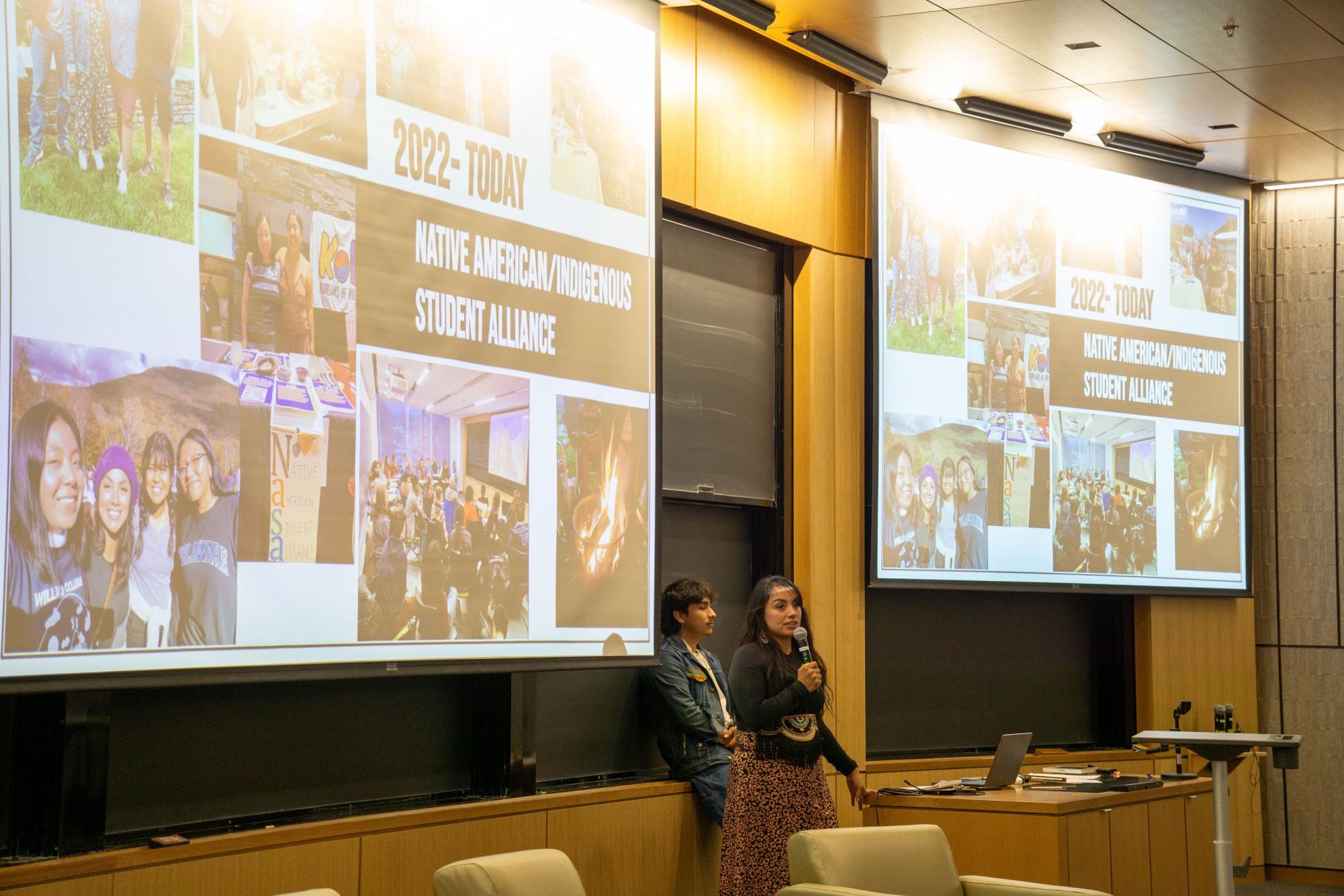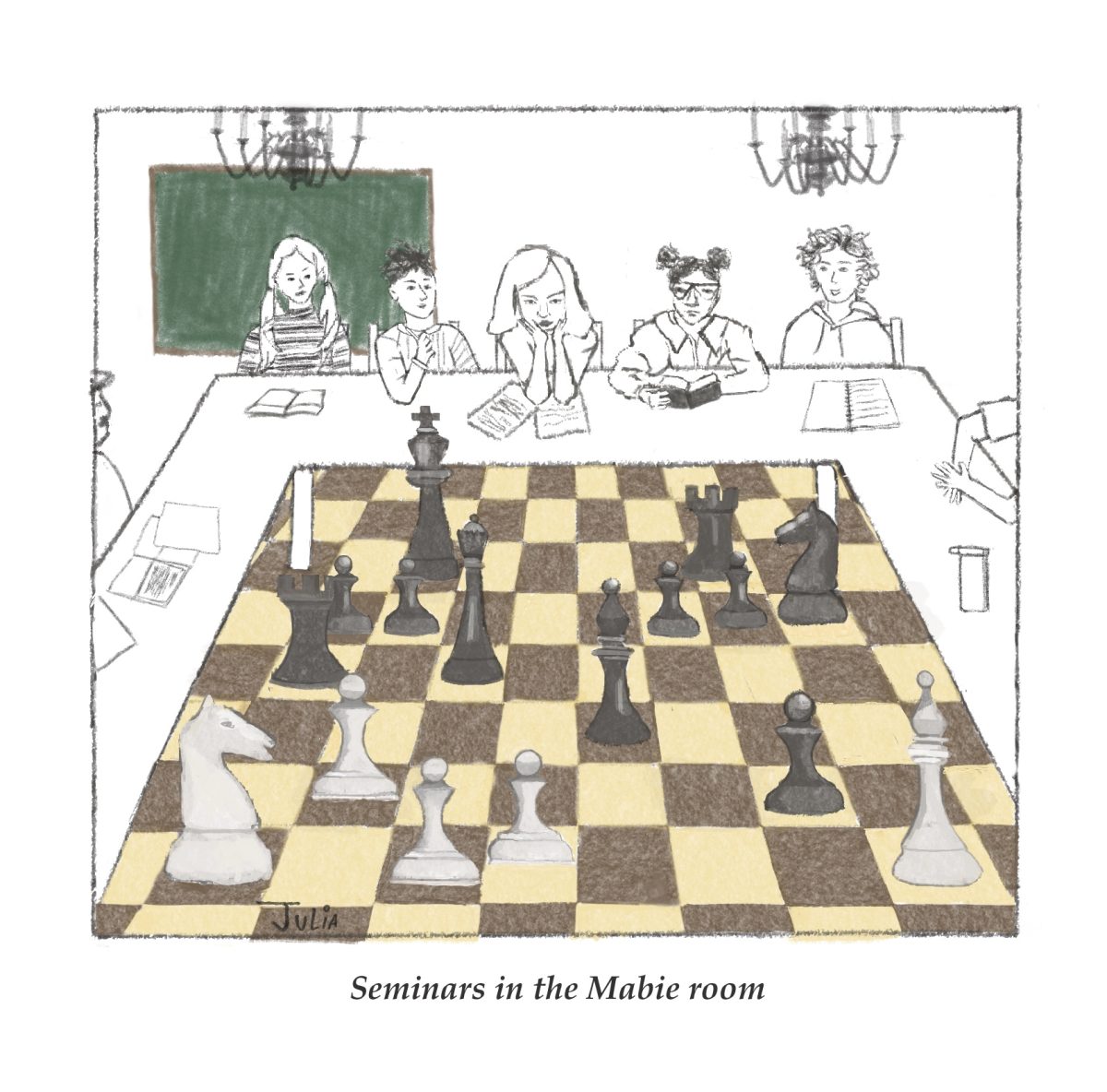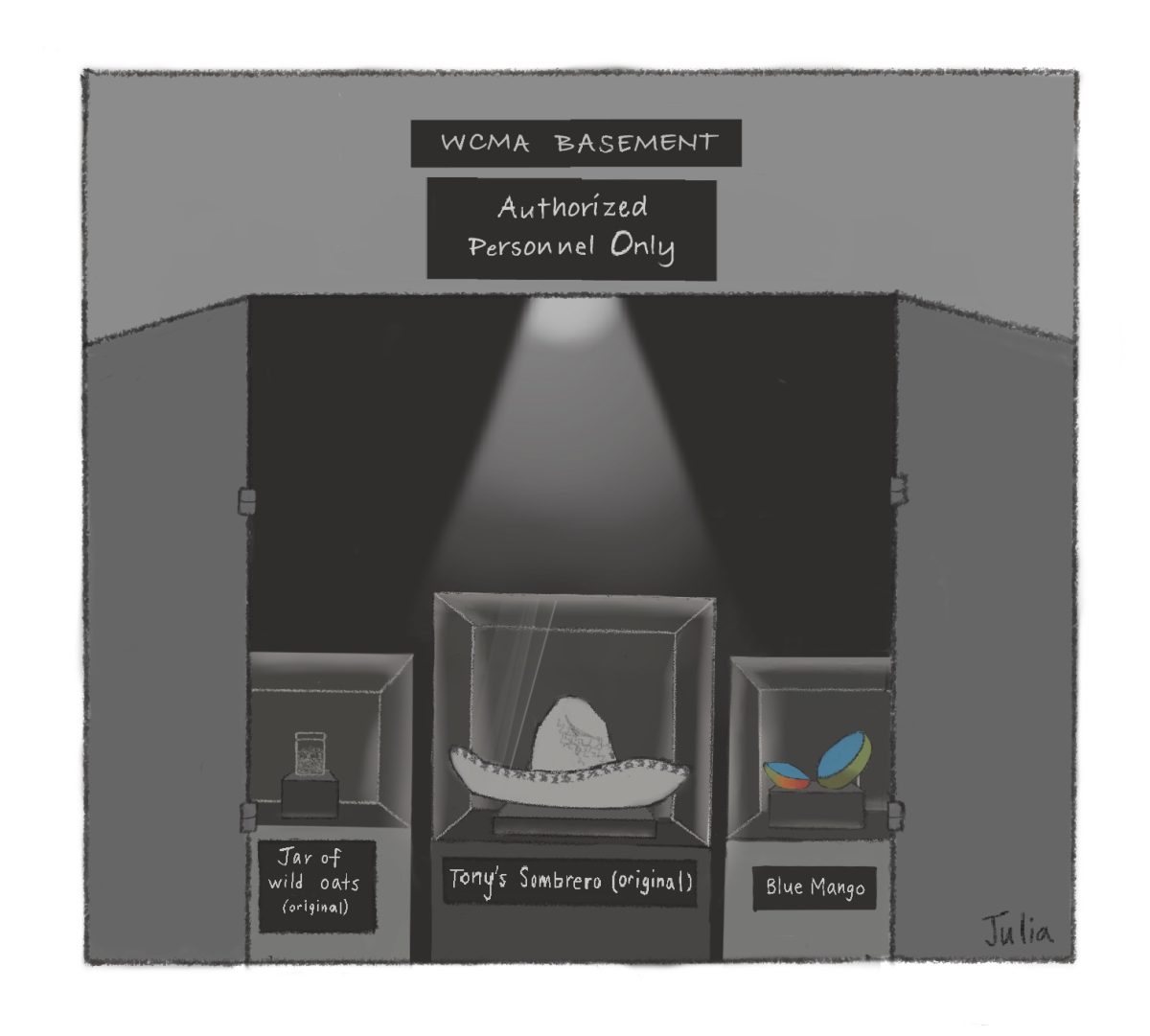
The College needs an Indigenous studies department, but let me be clear: It shouldn’t be an intellectual performance nor an exercise in ideological virtue signaling. It should be a place where truth flows quietly, where students can return to what sustains them: the land.
As a member of the Native American Indigenous Student Alliance (NISA), I’ve wrestled with what it means to create something meaningful within a system not built for us. My experience with Williams-Mystic offered a glimpse of what Indigenous education could look like. The program’s interdisciplinary approach — learning maritime history while learning to sail, studying marine biology alongside coastal communities, and welcoming figures like Chief Devon Parfait ’22 to campus — demonstrated the power of combining academic rigor with lived connection to the land and its stories.
Native students need a liaison — someone who can act as an intermediary between students and administration, providing cultural, academic, and emotional support. This person should be someone deeply familiar with Indigenous issues and practices, an advocate who can help ensure that the weight of organizing and educating does not fall entirely on students. Without this support, the “internal work” of navigating systemic challenges — educating peers, advocating for representation, and holding the College accountable — becomes overwhelming.
NISA presented demands in a petition delivered by Daisy Rosalez ’25.5 to President Maud S. Mandel on Nov. 5. It was a historic moment, though I personally wrestled with how it unfolded. Despite differing views on approach, the message remains clear: This institution must do more than acknowledge Indigenous existence; it must honor and uplift it.
An Indigenous studies department must be a space to listen, not speak over; a place to empower, not appropriate. It should emphasize experiential learning, outside and in touch with the land, at its core. The department could foster a new kind of environmental education at the College — one that combines Indigenous teachings on the sacredness of land with scientific knowledge. It should braid Indigenous kinship with modern inquiry, not as an act of nostalgia, but as a living, breathing practice that honors both the land and the people whose stories are inseparable from it.
What if an Indigenous studies department could teach us to move gently in a world that’s already hurting enough? What if it could remind us — not just through books, but through our way of life — that the earth is alive, and so are we?
At the College, we have glimpses of this possibility. Programs like Williams-Mystic and classes like Professor Joan Edwards’ “Field Botany and Plant Natural History” let students learn by engaging directly with the natural world. Reading Moby Dick on the last wooden whaling ship or identifying plants with your hands in the soil teaches us that education isn’t about mastery but belonging, humbly and attentively understanding the heavy weight of history. An Indigenous studies department could take this further, creating a sanctuary where science and spirit, academics and community, and intellect and intuition walk together.
But we have to get it right. It can’t be a space for performativity or hollow declarations. It can’t be another place to tokenize Indigenous voices or romanticize their traditions while ignoring the systemic harm they face. It must be a place for real, transformative work that acknowledges pain, beauty, loss, and resilience without turning away from the suffering.
The sacred is not a metaphor. It’s not an idea to admire from a distance. It’s in the rivers we’ve polluted, in the forests we’ve burned, in the voices we’ve silenced. It’s also in the people who have not given up, who continue to protect what matters, even when no one else is looking. The sacred is here, alive, waiting for us to remember our place within it.
This is the challenge and the promise an Indigenous studies department could invite: to create a space that isn’t about us but about something larger; to honor not just the teachings, but the people and the communities that carry them; to remember, in all the noise of modern life, what it means to live with intention, humility, and care.
Imagine if an Indigenous studies department could teach us not just facts but presence. It could show us how to listen, really listen, to the land, to each other, and to the quiet truths we often ignore. It could teach us that healing begins when we stop trying to conquer and start trying to understand.
Conquest is a force I have understood so viscerally — our human need for capital and exploitation, the insatiable drive to take from the earth and from each other. Nowhere did I feel that pain more than in the Amazon, where I spent time last spring, watching as the relentless hunger for land, oil, profit, and power consumed not just trees but entire ecosystems, lifeways, and histories. In that chaos, I felt grief sharper than words, mirrored in the faces of those who have been fighting for generations to protect what the rest of us take for granted. But it’s not just the planet that’s hurting. We are as well. We can learn that the earth’s pain is our pain, and that the first step toward healing is to listen — to the land and its people. The medicines of Indigenous wisdom — whether found in prayer, in silence, in ceremonies, or in the simple act of listening — can heal the fractures within ourselves as much as they heal our relationship with the earth, but only if we let them. We need an Indigenous studies department that can help bridge this wisdom to a generation searching for belonging.
At its heart, such a department could be a place where we reclaim joy and balance, where we relearn how to live in ways that honor the present moment. So, take this blessing — one I’ve had to learn time and again. It doesn’t come from someone who holds all the answers but from someone still learning, still wrestling with the truth, still striving to walk the middle path: Touch the earth. Listen to the voices — especially the ones that have been ignored for too long. Whatever they say, let it crack you open. Let it remind you that you’re not here to fix the world or even yourself. You’re here to live.
An Indigenous studies department could remind us that the sacred isn’t something we study or solve; it’s something we live. It’s in the soil we touch, the air we breathe, the way we move through a broken yet beautiful world.
The College should help us see this, not by overloading us with abstract theories and performative activism, but by creating a space where we can just be. Because in that stillness lies the blessing we often miss: life itself. And if an Indigenous studies department can help us carry that blessing — not in our heads, but in our breath, in our bones — then it’s not just needed. It’s imperative.
Isaac Rivera ’26 is a biology major from Denver, Colo.






